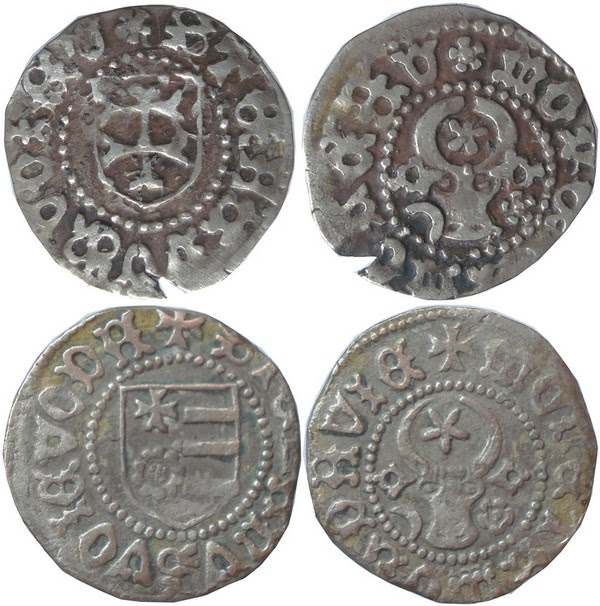>>>

The great ruler Stephen the Great, outstanding army commander and diplomat, was also concerned during his life with the economic prosperity of the country, supporting the development of crafts, trade and fairs. During his reign, groși and half groși minted in the dinar system were issued, a monetary system introduced in Moldova during the last reign of Petru Aron (1455-1457).
The coins were minted from silver of superior title, those that reflect stability in the economic life of the country at that time. Their masterful execution at the Suceava mint is among the beautiful artistic achievements during the reign of Stephen the Great.
During his reign, two types of issues were minted, for the two denominations: groși and half groși.
Type I issues have a split shield on the obverse; in the first quarter appears a rose surmounted by a cross and three fascias, in the second quarter. For the epigraph issues (groși), the image is accompanied by the circular legend with the name of the issuer: + STEFANVS VOIEVODA. On the other side appears the bour's head with a star between the horns accompanied by the heraldic furniture - the rose and the contoured crescent, placed to the right and left of the bour's head; circular legend: MOLDAVIE COIN.
On type II coins in the shield on the obverse appears a patriarchal cross (double) and the legend STEFANVSVOIEVOD or abbreviated STEFANVSVOIE. On the reverse, as in type I, the bour's head with heraldic attributes is preserved: rose right/crescent left and crescent right/rose left. A star or rose appears between the ox's horns. The legend accompanying the face with the bour head is MONETAMOLDAVI or abbreviated MONETAMOLDA.
The dating of Stephen the Great's coins is still under discussion. According to one opinion, type I issues were minted between 1457-1476, and type II between 1480/1481-1505 (Octavian Iliescu), and another 1465/1467-1475/1476 for type I and 1476/1479-1497 for type II (Ernest Oberländer-Târnoveanu).
The coins in this showcase were discovered during the archaeological excavations at Orheiul Vechi (Trebujeni, Orhei district) in the 6th and 7th decades of the 20th century:
1. Type I money issues, groși, silver
2. Type II money issues, groși, silver
3. Type II coin issue, half groși, silver

 31 August 1989 St., 121 A, MD 2012, Chisinau, Republic of Moldova
31 August 1989 St., 121 A, MD 2012, Chisinau, Republic of Moldova














































